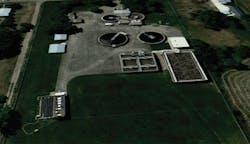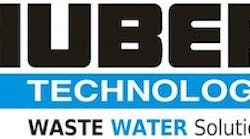The City of Havre Wastewater Treatment Plant in Havre, Mont., was in search of a solution that would improve its screening process and specifically prevent sand and rags from passage. The old system often became plugged with rags, which increased the biochemical oxygen demand (BOD) loading and removed organics that had to be reintroduced into the stream through extra treatment processes.
Challenge
Frequent clogs, buildup of grit and inefficiencies in operations had forced the City of Havre to look for replacement technology for its screening process. Because of the close proximity of communities to the plant, the city also wanted to implement a system that would help reduce odor emissions.
The City of Havre faced three formidable challenges: Grit passage was putting stress on each downstream component, grit buildup was consuming valuable space needed for water in the tanks and emission of odors was unpopular with neighbors and almost intolerable for crews.
Solution
The City if Havre learned quickly to depend on Huber’s RakeMax technology to help it overcome its challenges. The RakeMax enables the city’s operations to remove a high percentage of inorganics and grit so that the downstream processing is more effective and components are less stressed. The RakeMax reduces offensive odors by removing a large percentage of the waste that is generally trapped downstream in the screening process. The system’s configuration uses top and bottom covers to practically prevent any remaining odors from emitting into the air.
Results
Because Havre’s staff could install the RakeMax system, the need for outsourced installation consultants was eliminated. As such, the project racked up a $35,000 savings at the very beginning of the implementation.
The RakeMax system arrived in adjustable components that are designed to adjust to the size and depth of the channels. For the City of Havre, the system’s adjustability eliminated the need to make roof structure changes to accommodate height requirements, which is common with other systems.
The system’s rakes and screens work as a non-disruptive force in removing waste early in the screening process. The RakeMax operates optimally without human intervention, producing a clean end stream. The RakeMax process also keeps the plant cleaner.
Operators are totally out of harm’s way as they perform their duties. No one is required to perform the constant monitoring and maintenance that took place with the previous system. Unscheduled shutdowns and maintenance are extremely rare with Huber’s RakeMax, but the crew does cursory cleanings of its compactors on a two-month cycle and performs six-month maintenance checks, during which the system is shut down.
The most common need for the city to contact Huber is for ordering serpentine bags that are regularly changed in the composter. Huber’s experience with municipalities and with wastewater processes is extensive, as is its knowledge of the technologies it provides. This insight allows Huber to work with organizations to ensure that systems are designed to match up to immediate tactical challenges and long-term strategic goals.



